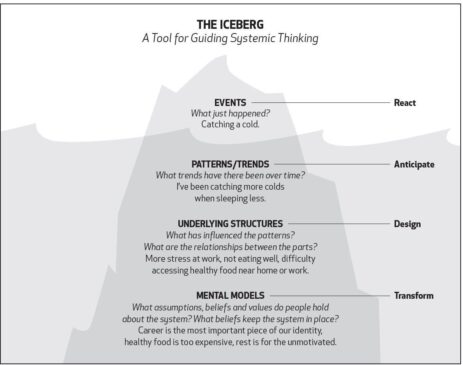What does effective digital transformation look like? Some authors describe Digital Transformation in terms of certain types of new technology and trends (big data, cloud, etc.) being applied to an existing business. They include, too, the subsequent change in business operations, such as the switch to subscription-based services versus the ownership of particular hardware and software.
While these characteristics can be found in Digital Transformation initiatives, I would like to offer an alternative, more general definition:
Digital Transformation is a type of change through which an organization seeks to become a technology-based business.
This definition implies that at a cultural level, the organization must accept that:
- that their goal might be to deliver value to humans, and
- that their principal value delivery mechanism is technology-based.
Take, for example, retail, non-digital banks. Virtually all of their operations are supported by software, yet most banks don’t identify themselves as software or even technology companies.
Systems Thinking
Let’s get to the thinking behind all this. For more context, read about the questions to ask before undertaking transformation. From there, the following model can help explain why organizations need the questions and introspection:

Events & Patterns
When you’re at the events level, things merely happen to you, and you react to them. For organizations, that’s all their users see. Some savvy users might infer some of the patterns behind an experience, but it’s not very common.
Underlying Structures
At this level, we consider structure. The organizational design, structures, tools, technology, and practices implemented—all of these heavily influence the patterns that we see in a given experience. In a way, this is a more general version of Conway’s law:
Organizations which design systems (…) are constrained to produce designs which are copies of the communication structures of these organizations.
— M. Conway
At this level, organizations invest much of the effort in Digital Transformation. Converting the organization to agile, acquiring new technology, training teams in continuous delivery, etc.
In reality, the tendency is to preserve old structures and resist change. Many transformation programs find this out too late in the game. They’ve spent millions of dollars already… And the usual scapegoat is that the current business and loyal customers would suffer if the org transformed completely, cold turkey. Why does this happen? The answer lies one level down.
Mental Models
Then come Mental Models: the level at which transformation happens. You cannot develop new structures with outdated thinking. I like to characterize this level as “the way we do things around here.” It permeates everything in the organization; it is pure culture.
Since there are no fads at this level, I would argue that instead of changing it, we have to aspire to influence it. In some organizations, people have intertwined the culture with their personal values. These are sometimes impossible to change.
So, does all this mean that effective Digital Transformation cannot be achieved without changing everyone’s mind first? No.
A More Effective Digital Transformation Strategy
In sum, let’s first raise awareness of the need to influence change. We should do this at the cultural level of any organization that’s considering or undergoing Digital Transformation. And also, let’s make sure:
- that we measure and iterate on cultural change at the same rate we do with technology,
- that we create links between all the organizational layers in the that help the organization transform in sync.
When we have this mindset, we are better able to assess the organization we’re a part of. And we can create better structures and strategies for sustainable change.



